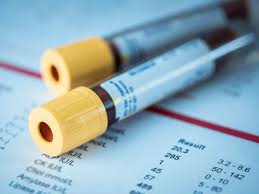
Breaking News
 What They Don't Tell You About Autoimmune Disorders
What They Don't Tell You About Autoimmune Disorders
 Jim Lovell, commander of NASA's Apollo 13 moon mission, dies at 97
Jim Lovell, commander of NASA's Apollo 13 moon mission, dies at 97
 Powerful new oral painkiller blocks signals without sedation or addiction
Powerful new oral painkiller blocks signals without sedation or addiction
 Tesla Gets a Texas Rideshare Network License
Tesla Gets a Texas Rideshare Network License
Top Tech News
 3D printing set to slash nuclear plant build times & costs
3D printing set to slash nuclear plant build times & costs
 You can design the wheels for NASA's next moon vehicle with the 'Rock and Roll Challenge
You can design the wheels for NASA's next moon vehicle with the 'Rock and Roll Challenge
 'Robot skin' beats human reflexes, transforms grip with fabric-powered touch
'Robot skin' beats human reflexes, transforms grip with fabric-powered touch
 World's first nuclear fusion plant being built in US to power Microsoft data centers
World's first nuclear fusion plant being built in US to power Microsoft data centers
 The mitochondria are more than just the "powerhouse of the cell" – they initiate immune...
The mitochondria are more than just the "powerhouse of the cell" – they initiate immune...
 Historic Aviation Engine Advance to Unlock Hypersonic Mach 10 Planes
Historic Aviation Engine Advance to Unlock Hypersonic Mach 10 Planes
 OpenAI CEO Sam Altman Pitches Eyeball-Scanning World ID to Bankers
OpenAI CEO Sam Altman Pitches Eyeball-Scanning World ID to Bankers
 New 3D-printed titanium alloy is stronger and cheaper than ever before
New 3D-printed titanium alloy is stronger and cheaper than ever before
 What is Unitree's new $6,000 humanoid robot good for?
What is Unitree's new $6,000 humanoid robot good for?
 "No CGI, No AI, Pure Engineering": Watch Raw Footage Of 'Star Wars'-Style Speeder
"No CGI, No AI, Pure Engineering": Watch Raw Footage Of 'Star Wars'-Style Speeder
New blood test could detect more than 20 types of cancer

Experts said the breakthrough - which spots changes in the genes, as disease develops - could be used to improve screening for cancer, allowing treatment much sooner, when it is more likely to succeed.
Crucially, 99.4 per cent cases identified as cancer were correctly spotted - meaning just 0.6 per cent of cases were misdiagnoses of healthy patients.
The test was able to detect one third of patients with stage one disease, and three quarters of those with stage two disease.
Ministers have pledged to speed diagnosis, so that by 2028 three quarters of cancer patients are diagnosed at these two stages. Currently just half of patients can expect to receive a diagnosis before they reach stage three or four.
The advances, by US scientists, look for abnormal patterns of methylation in the DNA, which can indicate different types of cancer.



